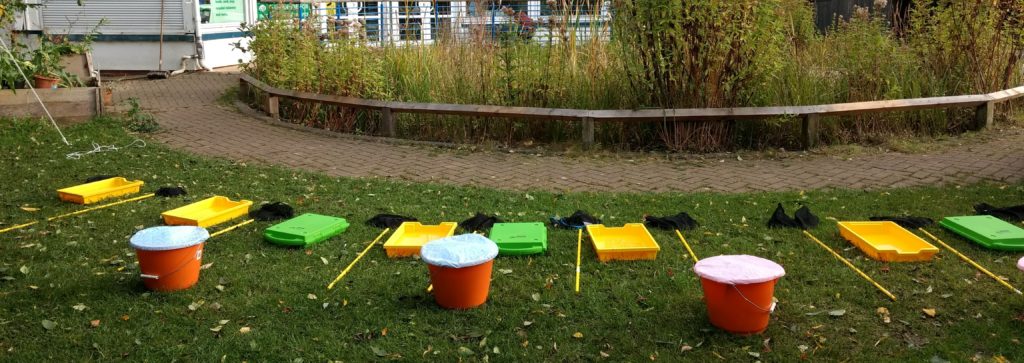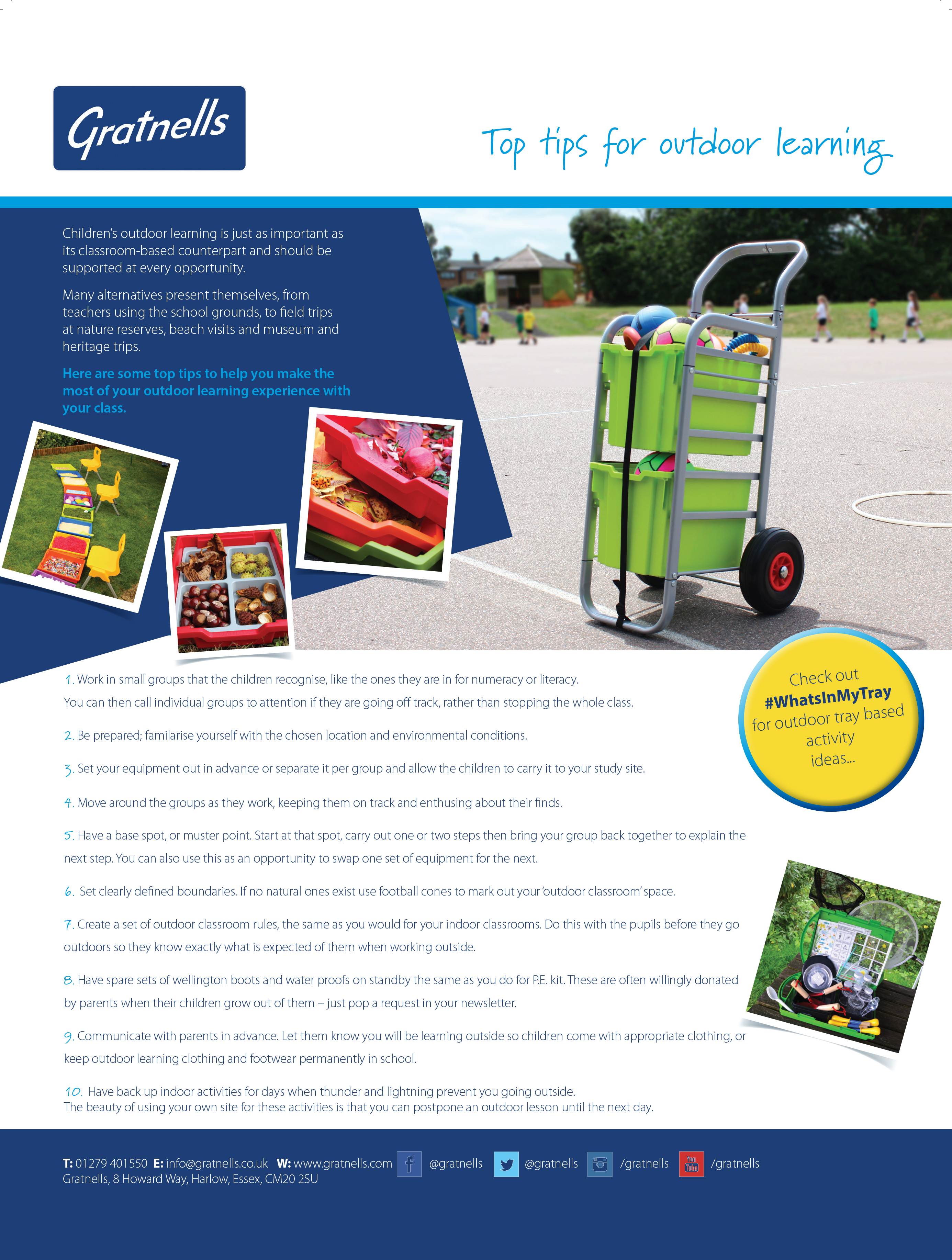Outdoor learning top tips
When outside, work in small groups that the children recognise, like the ones they are in for numeracy or literacy. You can call individual groups to attention if they are going off track, rather than stopping the whole class.
Set your equipment out in advance or separate it per group and allow the children to carry it to your study site. Use of the outdoor education kits highlighted makes transport and storage easy.
Have a base spot, or muster point. Start at that spot, carry out one or two steps then bring your group back together to explain the next step. You can also use this as an opportunity to swap one set of equipment for the next.

Move around the groups as they work, keeping them on track and enthusing about their finds.
Set clearly defined boundaries. If no natural ones exist use football cones to mark out your ‘outdoor classroom’ space.
Create a set of outdoor classroom rules, the same as you would for your indoor classrooms. Do this with the pupils before they go outdoors so they know exactly what is expected of them when working outside.
Communicate with parents in advance. Let them know you will be learning outside so children come with appropriate clothing, or keep outdoor learning clothing and footwear permanently in school.
Have spare sets of wellington boots and water proofs on standby the same as you do for P.E. kit. These are often willingly donated by parents when their children grow out of them – just pop a request in your newsletter.
Have back up indoor activities for days when thunder and lightning prevent you going outside. The beauty of using your own site for these activities is that you can postpone an outdoor lesson until the next day. You can also take immediate advantage of natural learning opportunities, such as baby frogs emerging from your pond, to get outside quickly.


